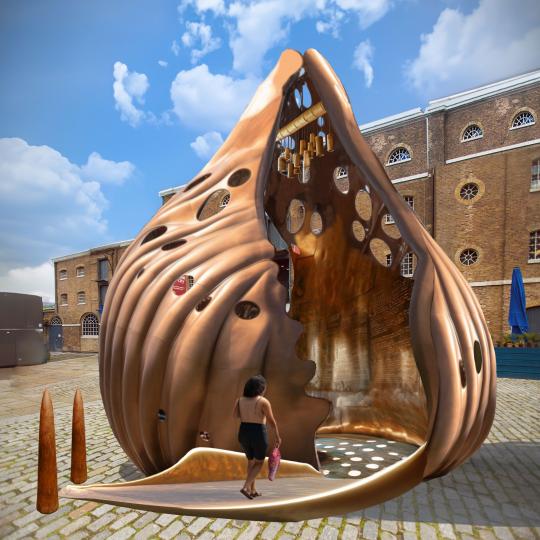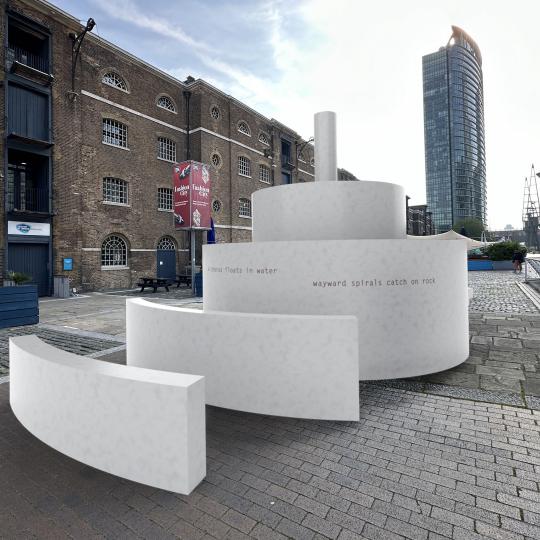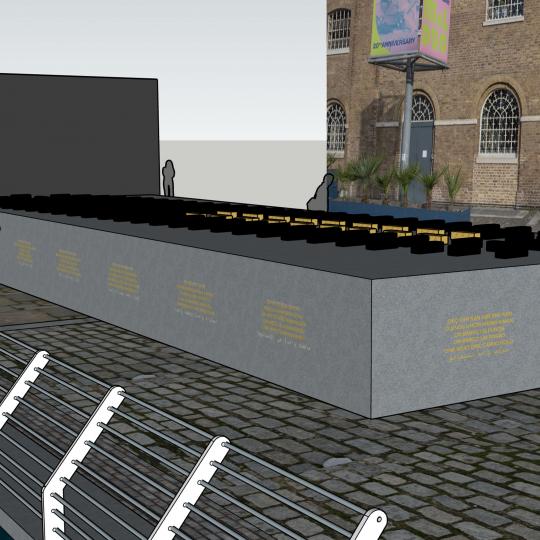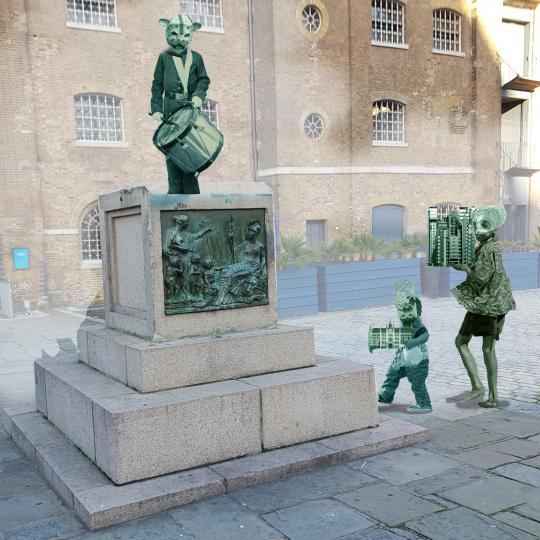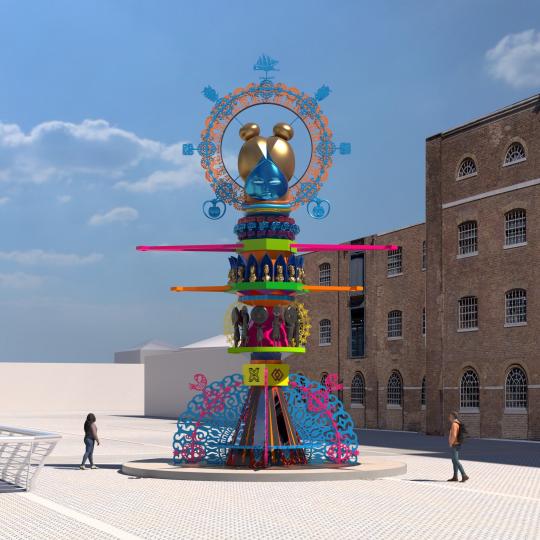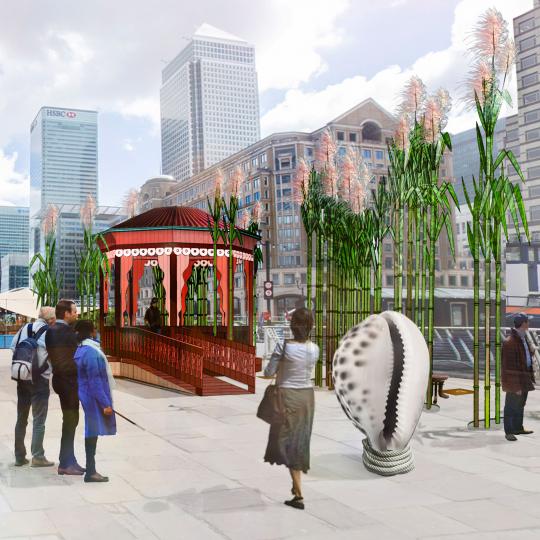An immersive sculpture offering communities in London a space to gather, listen, grieve and remember the victims of transatlantic slavery.
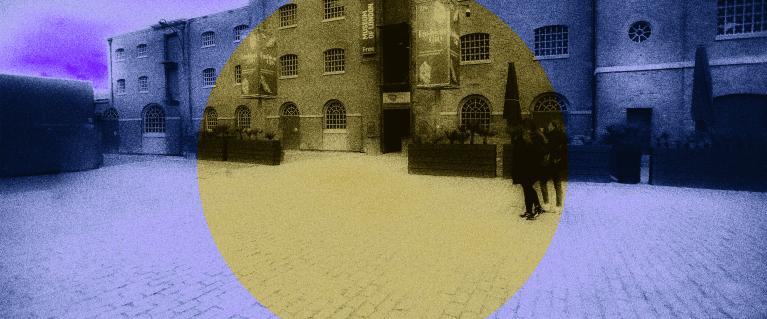
Artist shortlist: Memorial to victims of transatlantic slavery
London played a central role in transatlantic slavery yet there is little to honour the sacrifices, contributions, lives and descendants of those enslaved during the transatlantic slave trade.
In March 2023, the Mayor of London committed £500,000 to develop a memorial initiative. We now want to hear your views on the six incredible ideas shortlisted for it.
The memorial will include a permanent artwork, satellite sites and an engagement programme. These were all informed by the Mayor’s Commission for Diversity in the Public Realm. The main artwork will be installed at West India Quay in London’s Docklands.
View the shortlist submissions
A large-scale circular stone structure, representing a ripple's form and idea.
A poetic and subliminal sculpture to foster a reflection around the Middle Passage, interrupting the collective imaginary.
Bronze sculptures of boys and girls process together, wearing Carnival or African-influenced masks.
A richly decorated representation of an African Queen, believed to be the mother of all deceased people.
Bringing together visual cues from across the African diaspora.
Cast your vote for the memorial commission
Vote for artworkLocation of the memorial
The main artwork will sit outside the entrance to the Museum of London Docklands in West India Quay.
This location was chosen because of its connection to the transatlantic slavery. Warehouses in West India Quay were built to receive the products of slavery. They are some of the only surviving buildings of their kind in the capital.
There will also be satellite sites to connect with different stories of slavery across London. Through these satellite sites, the memorial will bring to life the weight of this history and the legacy of the slave trade in London, the UK and the world.
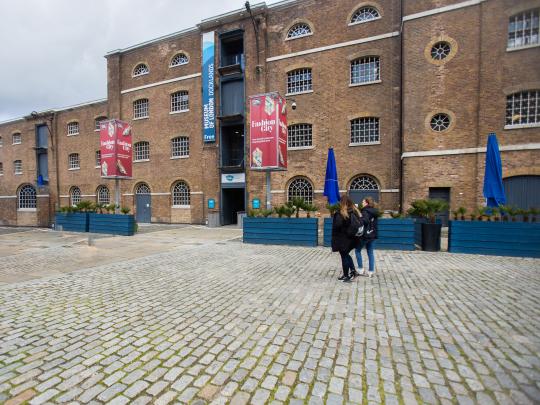
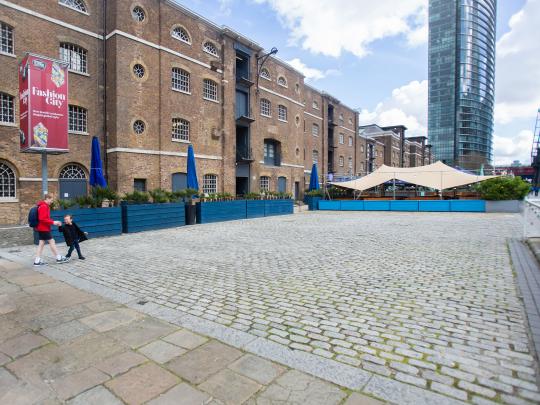
Why it's called Memorial to victims of transatlantic slavery
This memorial focuses on those who suffered, were oppressed and forced to overcome horrific harms committed against them. So we refer clearly to the victims of transatlantic slavery.
We acknowledge the word ‘victim’ comes with complex meanings. For some, it validates that horrifying crimes were committed against enslaved Africans. For others, it is passive and ahistorical, denying the strength and resistance of those enslaved.
We acknowledge the terms and language is continually changing when talking about transatlantic slavery. We will continue to listen and explore how we can best talk about this project in a manner that is respectful, humanising and accurate.
Why create a memorial
Memorials are powerful symbols. Many public memorials in London commemorate enslavers or focus on abolitionists rather than the enslaved. This memorial is a chance to redress this balance.
Much of London’s wealth was built on the labour of enslaved Africans. A memorial is one way to remember. It will help unite the shared history of the city and grow a collective awareness of this period and its legacy. By honoring this history, we respect and empower all Londoners.
This memorial contributes to a wider conversation already happening in the UK and worldwide about how to recognise and discuss this shared history. It will acknowledge London’s role in transatlantic slavery. And foreground a major permanent artwork by a Black artist, at a time when Britain’s Black art scene is being celebrated worldwide.
There is a growing appetite for this history. Through a London-wide collaborative process between artists, children and communities, this will be a chance to bring this history alive in an imaginative and compelling way.
Playing this video will set cookies from YouTube/Google
Playing this video will set cookies from YouTube/Google
Shaping this commission
The memorial is underpinned by a curatorial strategy, as well as deep community engagement.
These proposals follow three years of community engagement, consultation and considered thinking about London’s public realm and how to mark this important part of London’s history. There were many:
-
roundtables with experts and academics, communities and young people
-
wider community-led conversations, each exploring some of the narrative questions around the memorial.
In this period, over a 1000 people gave their views and feedback.
In March 2024, we began conversations with Londoners to determine:
-
what the learning offer should look like
-
how it should be delivered
-
what it should include.
Over 200 teachers, parents, primary and secondary school pupils, academics and heritage practitioners have been part of the conversation so far.
A longer list of artists was put together for this commission by arts professionals, sector specialists and community groups. The Artistic Advisory Panel were responsible for selecting the shortlist.
Once the public have given feedback on the proposals, the panel will select the final work.
An Artistic Advisory Panel is overseeing the commissioning process. The group is formed of experts from the field of art, broadcasting, academia and public realm.
It is co-chaired by Dr Debbie Bernard-Weekes and Justine Simons OBE and includes the following independent advisors:
-
Zerritha Brown, Head of Culture, London Borough of Camden
-
Aindrea Emelife, Curator of Modern and Contemporary at MOWAA (Museum of West African Art)
-
Douglas Gilmore, Director Museum of London Docklands
-
Gaylene Gould, Broadcaster, curator and artist
-
Glory Samjolly, Artist
-
Binki Taylor, Partner The Brixton Project (Commission for Diversity in the Public Realm)
-
Dr Zoé Whitley, Director Chisenhale Gallery (Commission for Diversity in the Public Realm)
Share your views by voting for a memorial commission
Cast your memorial voteAbout the Commission for Diversity in the Public Realm
London is one of the most diverse cities in the world, with more than 300 languages spoken every day. Yet its statues, plaques and street names don't reflect our city's stories.
The Mayor of London is committed to ensuring that the capital’s population and history are celebrated and commemorated. After unveiling the statue of suffragist leader Millicent Fawcett in Parliament Square in 2018 – the first statue of a woman in the Square – the Mayor and his senior team set up the Commission for Diversity in the Public Realm.
This memorial is part of the work started by the Commission for Diversity in the Public Realm. It also brings together other groups, such as the UNESCO Community Advisory Group, other partners and stakeholders, and our Partners Board.
Stay up to date
Sign up to the newsletter to receive updates, or email [email protected] if you would like to get in touch.
